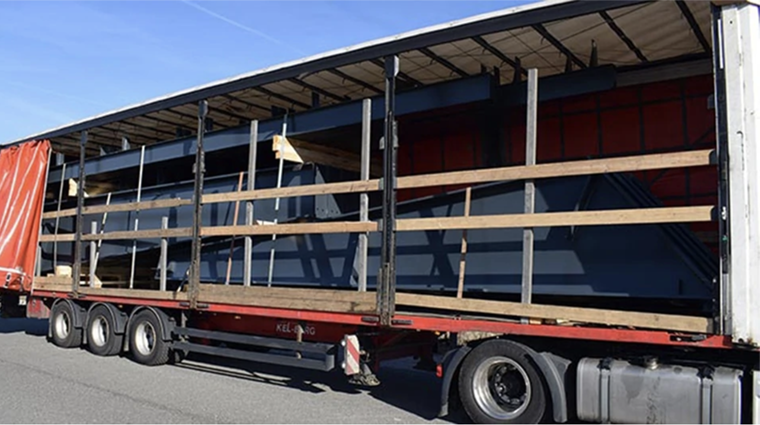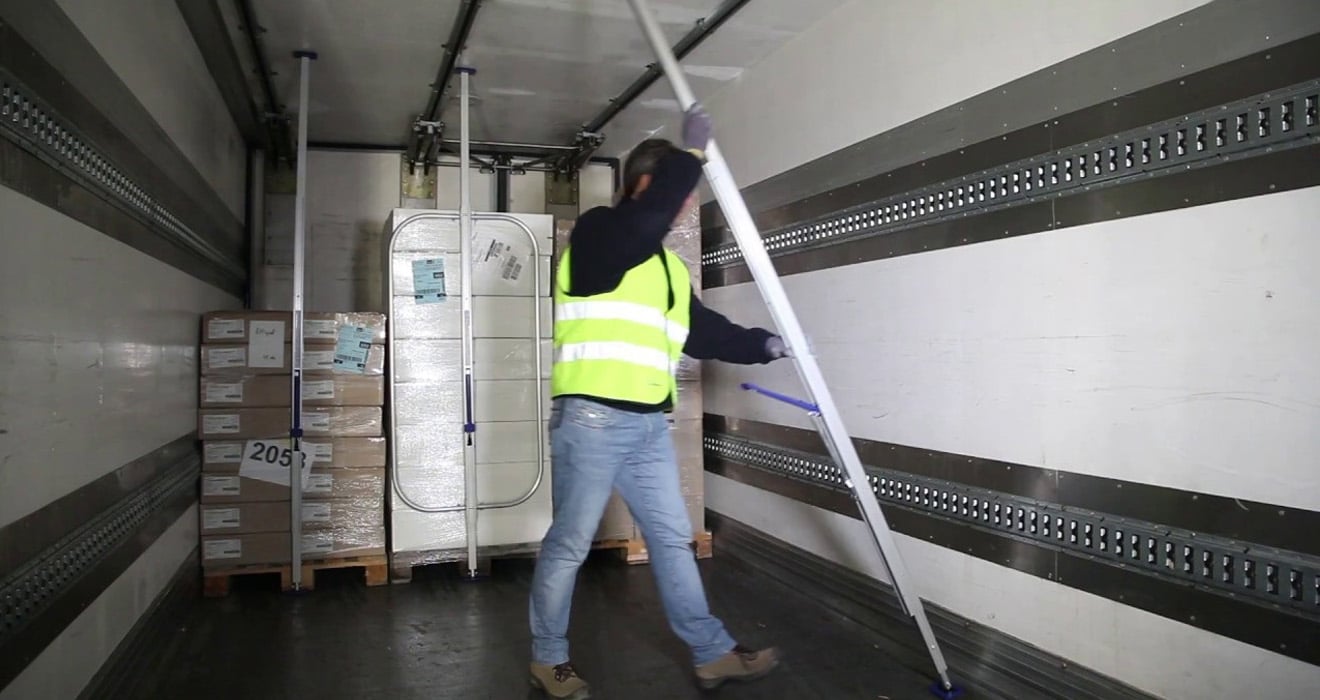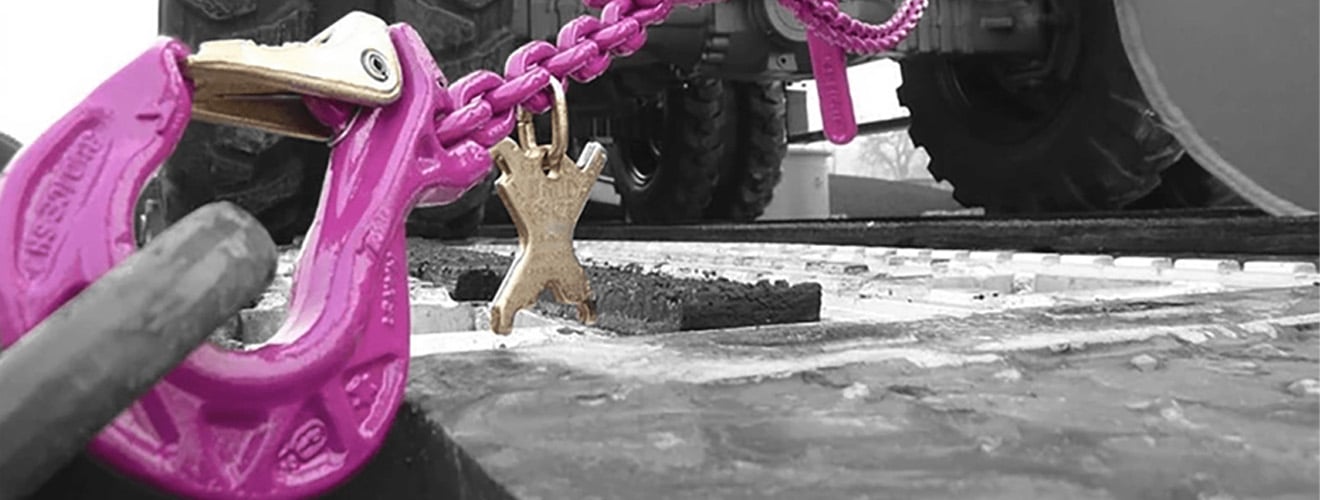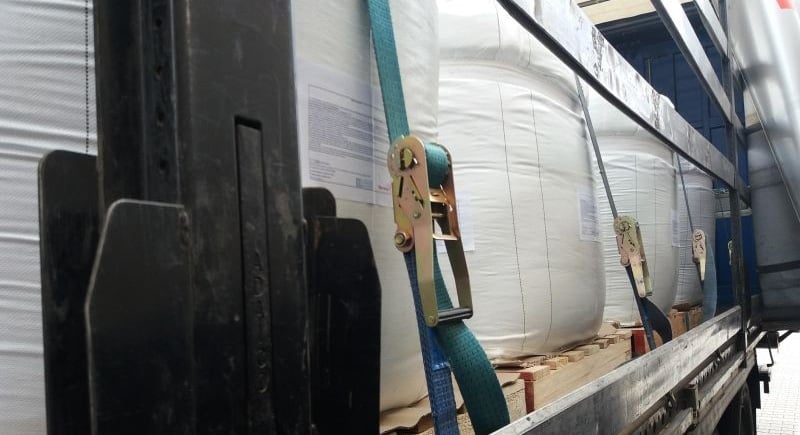
On a post about a truck that was fined by German police for poor cargo securing, a whole discussion ensued about the number of lashings needed. The trailer was loaded up to the roof with solid steel components. The 10 of 9-metres long components weighing 2.1 tons each and 9 components weighing 500 kilos were secured using just 7 lashings. Those lashings were also worn and no longer suitable for securing cargo safely. According to the German police, at least 55 lashings should have been used. But is that really the case?
The reactions show that a lot of people consider it ludicrous that the cargo securing control measures carried out in Germany are so strict. “Only those crazy Germans could require 55 lashings.” But is 55 really such a crazy number of lashings? And is this only mandatory in Germany or does it also apply in the Netherlands? We asked our cargo securing specialist Niels Bouwmeester what the actual requirements are according to European guidelines.
“I am surprised at the opinions expressed during this discussion. There is a reason for these strict cargo securing rules. Every year, thousands of accidents – and all the ensuing consequences – are caused by cargo not being secured properly. The penalties may not be very high but transshipment and re-securing also costs time and money. Besides, the reason you secure cargo is not to avoid penalties: the main reason for securing cargo is to improve safety! No-one wants to have an accident on their conscience, do they?”
“Unfortunately, incidents of this type are quite common. I come across poorly secured cargo on the road on a daily basis. In fact, 70% of the cargo on the roads in the Netherlands has been secured poorly or incorrectly. Often it’s down to ignorance, people think that a few lashings will keep the cargo secure. Nothing could be further from the truth. So the rules are there for a reason. A carrier should secure 80% of the cargo to the front, 50% to the side and 50% to the back,” says Bouwmeester.
Calculating the number of lashings
Niels: “If I take this specific example of steel components and carry out a calculation (based on the formula for lashings), then a transport unit (CODE L) where the cargo is not placed against the front wall does indeed require 54 lashings. See solution 1. Another possibility is to use anti-slip mats. If you use anti-slip mats properly, you will increase the frictional resistance and require considerably fewer lashings. See solution 2.
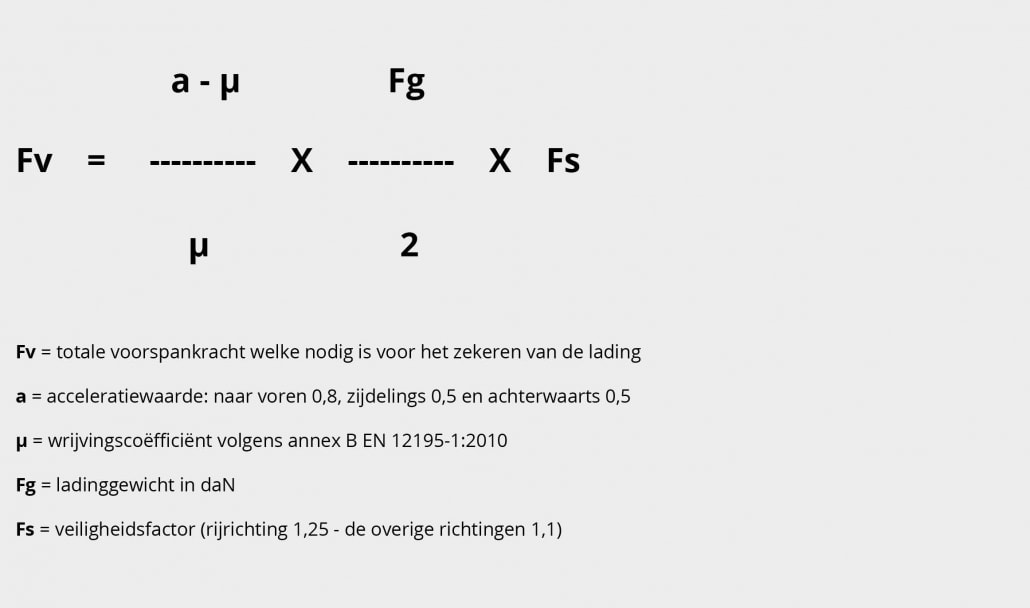
Solution 1: securing cargo using lashings
I based this calculation on 25.5 tons of cargo, a Code L transport unit, no loading against the front wall, a friction coefficient of 0.35, an optimum tying angle and use of lashings with an STF value of 375 daN. Securing in the direction of travel is sufficient in this case. It is therefore not necessary to secure the cargo to the side or to the rear.
Securing in the direction of travel
0.8 – 0.35 = 0.45
0.45: 0.35 = 1.28
25500: 2 = 12750
12750 x 1.28 = 16320
16320 x 1.25 = 20400
20400: 375 = 54 lashings
Total number of lashings required = 54 lashings
Solution 2: securing cargo using lashings and anti slip mats
Other cargo securing solutions
Niels based the above-mentioned cargo securing solutions on a Code L transport unit where the cargo was not placed against the front wall. However if it was, you can reckon on 40% of the loading capacity. With 30% to the side and 25% to the rear. As a result, you will require fewer lashings. In this case, you cannot load the cargo against the sides because the vehicle is a curtainsider.
If you are using an XL certified transport unit and the cargo is placed against the front wall, you can reckon on 50% of the loading capacity. With 40% to the side and 30% to the rear. In this case, we don’t know the loading capacity for an XL calculation: this will depend on the vehicle data.
These values only apply to form-fit loading. With a maximum permissible gap of 8 cm.
Code L transport unit
Front wall 40% of the loading capacity
(max. 5000 daN)
Side walls 30% of the loading capacity
(0% in the case of a curtainsider)
Rear wall 25% of the loading capacity
Code XL transport unit
Front wall 50% of the loading capacity
Side walls 40% of the loading capacity
Rear wall 30% of the loading capacity

